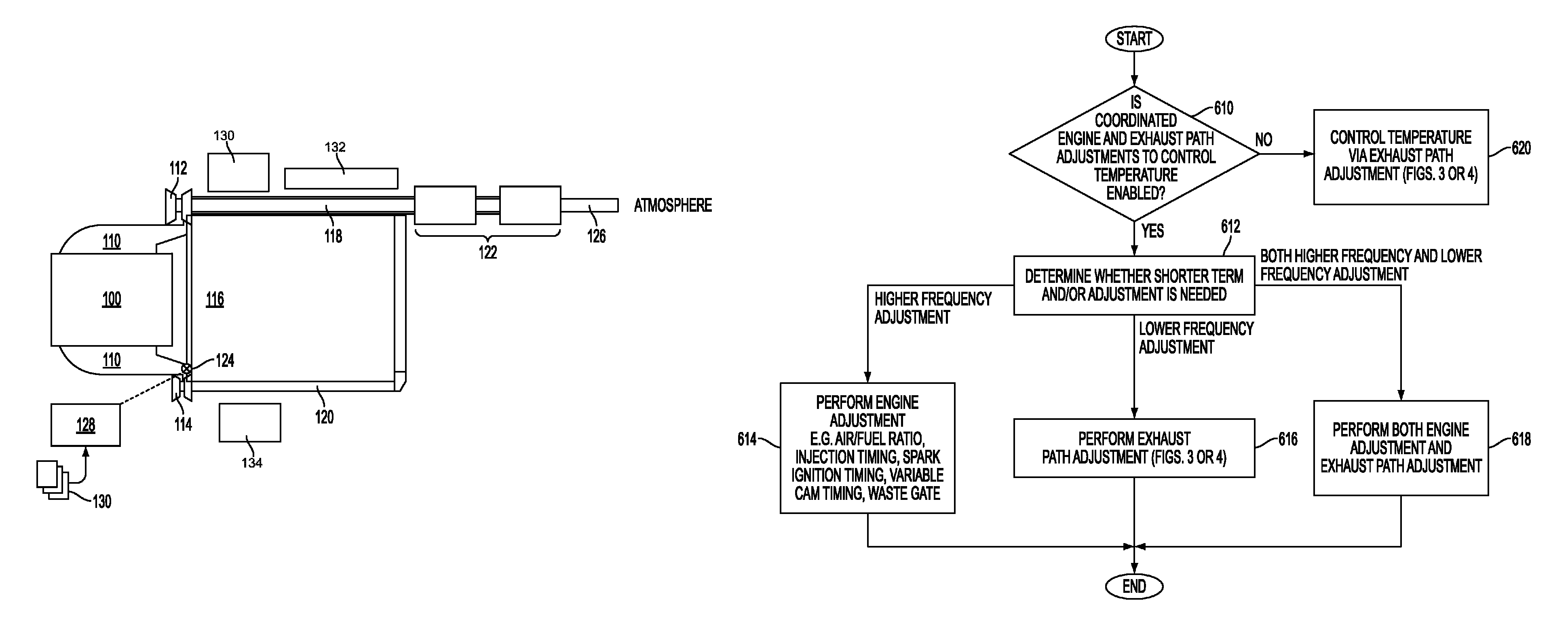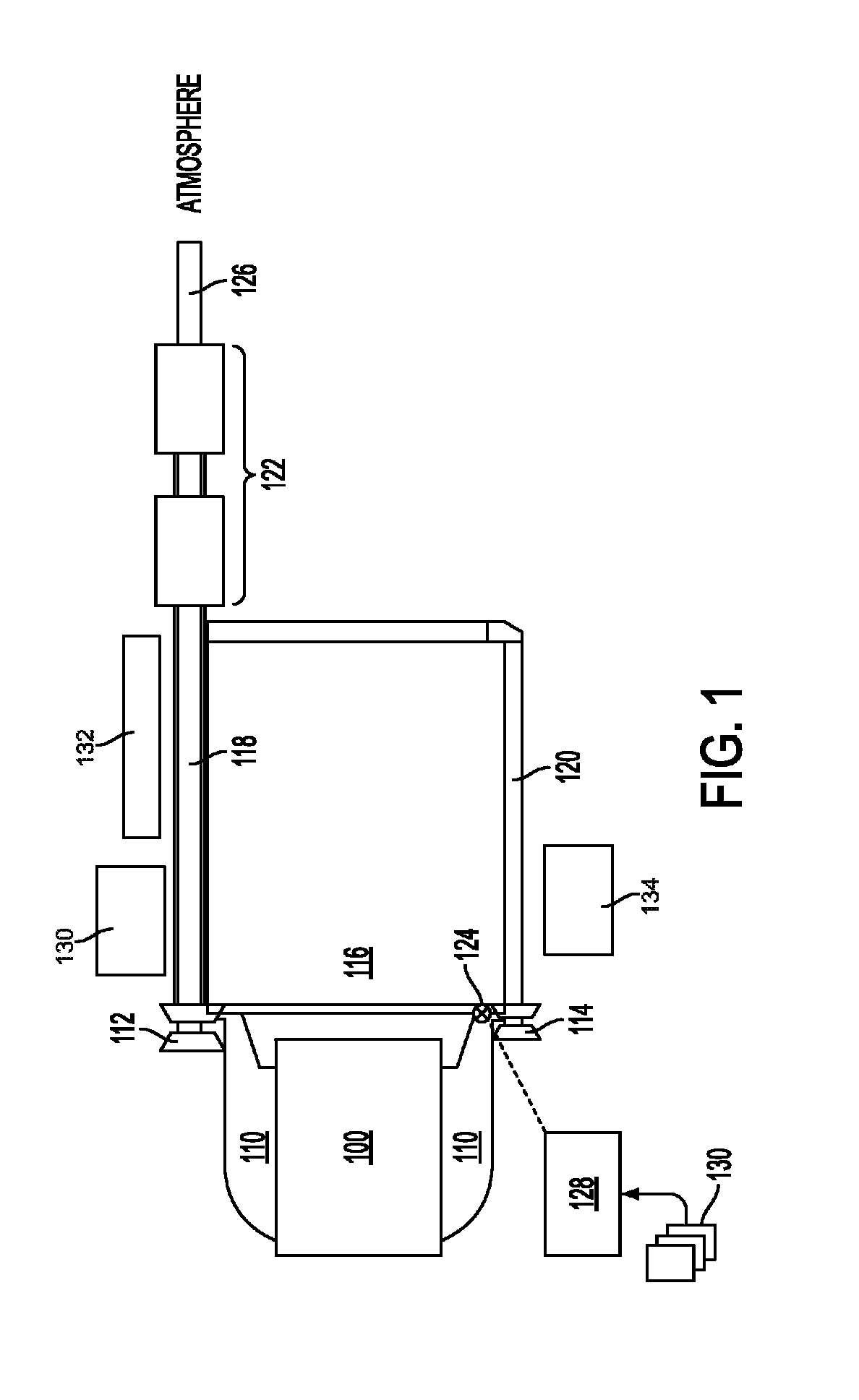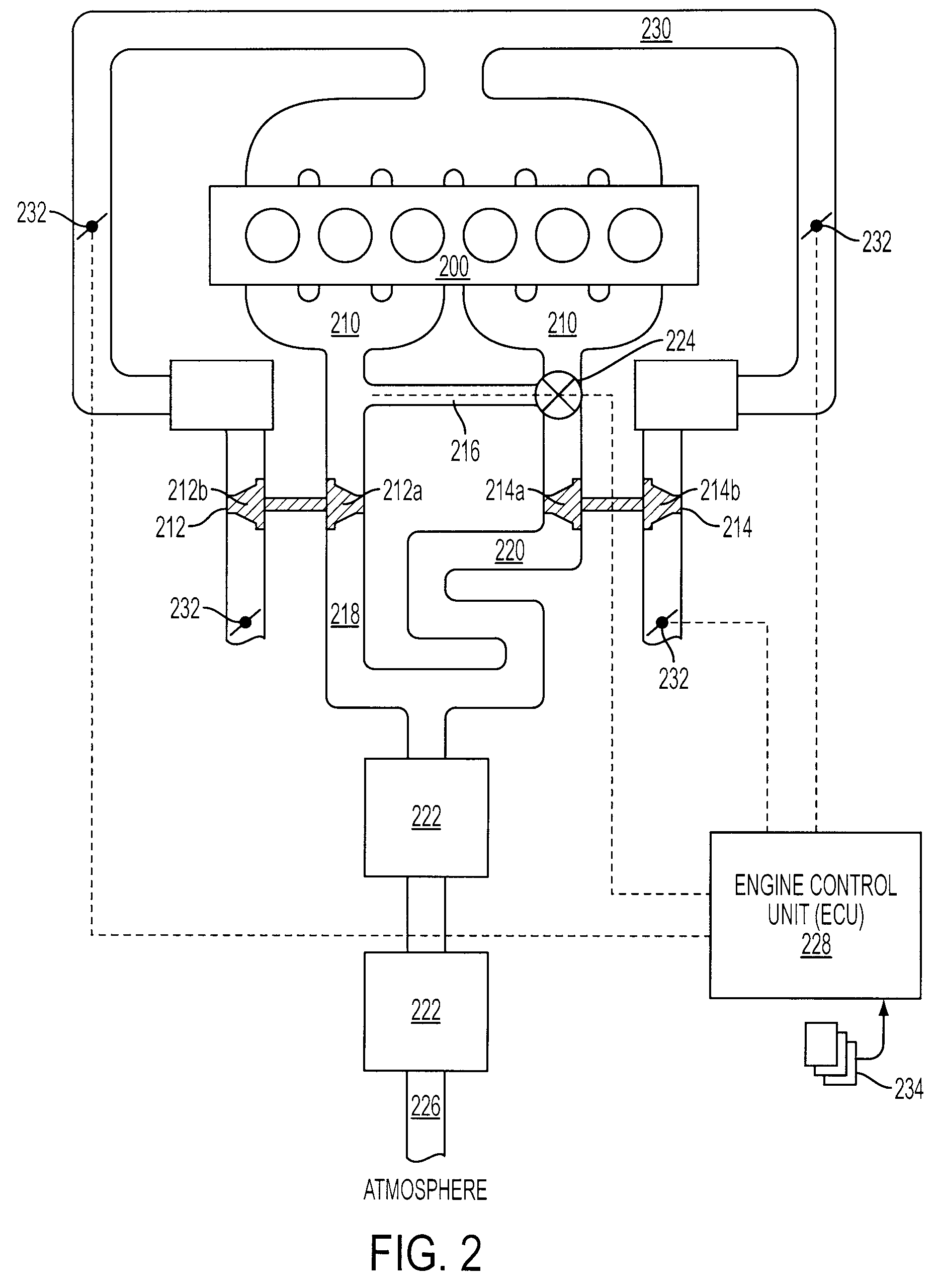Parallel-sequential turbocharging for improved exhaust temperature control
a parallel-sequence, exhaust temperature control technology, applied in the direction of electric control, combustion engines, machines/engines, etc., can solve the problems of low device efficiency, difficult to maintain the exhaust temperature within a proper range, limited engine power, etc., to achieve the effect of reducing turbo lag, increasing air induction, and maintaining peak boosting performan
- Summary
- Abstract
- Description
- Claims
- Application Information
AI Technical Summary
Benefits of technology
Problems solved by technology
Method used
Image
Examples
first embodiment
[0015]As illustrated in FIG. 1, an internal combustion engine with a dual turbocharger system in accordance with a first embodiment includes a multi-cylinder engine block 100, an exhaust manifold 110, a first turbocharger 112, a second turbocharger 114, a lower heat loss path 118, a higher heat loss path 120, an emission control device 122, an exhaust tail-pipe 126 that opens into the atmosphere, a crossover 116 that provides a passage between the lower heat loss path 118 and the higher heat loss path 120, and a control mechanism 124 that can control the exhaust flow through the crossover 116.
[0016]The exhaust manifold 110 is connected to the engine exhaust outlets and includes a first portion connected to a first group of engine cylinders and a second portion connected to a second group of engine cylinders. The exhaust manifold 110 is also connected to the turbochargers with the first portion connected to the first turbocharger 112 and the second portion connected to the second tur...
second embodiment
[0028]FIG. 2 illustrates an engine system with a dual turbocharger system in accordance with a second embodiment includes an in-line engine block 200, an engine intake conduit 230, an exhaust manifold 210, a first turbocharger 212, a second turbocharger 214, a lower heat loss path 218, a higher heat loss path 220, an emission control device 222, an exhaust tail-pipe 226 that opens into the atmosphere, a crossover 216 that provides a passage between the lower heat loss path 218 and the higher heat loss path 220, a control mechanism 224 that can control the exhaust flow through the crossover 216, and an engine control unit (ECU) for controlling the operation of the mechanism 224, sometimes in coordination with various engine throttles 232.
[0029]In this particular embodiment, the control mechanism 224 is located immediately upstream of the lower heat loss path and serves to cut off the exhaust flow through the lower heat loss path when it is in a closed position, and to enable various ...
PUM
 Login to View More
Login to View More Abstract
Description
Claims
Application Information
 Login to View More
Login to View More - R&D
- Intellectual Property
- Life Sciences
- Materials
- Tech Scout
- Unparalleled Data Quality
- Higher Quality Content
- 60% Fewer Hallucinations
Browse by: Latest US Patents, China's latest patents, Technical Efficacy Thesaurus, Application Domain, Technology Topic, Popular Technical Reports.
© 2025 PatSnap. All rights reserved.Legal|Privacy policy|Modern Slavery Act Transparency Statement|Sitemap|About US| Contact US: help@patsnap.com



